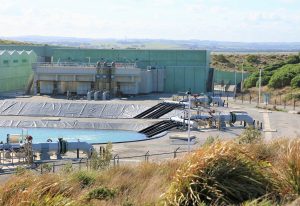
Gippsland Regional Water Syndicate
About This Project
 This group of three regional utilities are evaluating whether they can make strategic improvements to their organisations by collaborating in a shared utility Billing and/or CRM system. The potential benefits are improved access and use of scarce skills, better economy of scale and improved ROI while reducing risk and accelerating digital service delivery.
This group of three regional utilities are evaluating whether they can make strategic improvements to their organisations by collaborating in a shared utility Billing and/or CRM system. The potential benefits are improved access and use of scarce skills, better economy of scale and improved ROI while reducing risk and accelerating digital service delivery.
The Situation
The Gippsland Regional Water Syndicate (GRWS/The Organisation), which comprises East Gippsland Water (EGW), South Gippsland Water (SGW) and Westernport Water (WPW) have undertaken extensive analysis work, which included an ICT Shared Benefits Review. One of the major projects identified as a common need was the replacement of the Utility Billing and Customer Relationship Management (CRM) systems across the three syndicate members.
The syndicate required a feasibility assessment of the different business models and technology platforms available to enable each corporation to access the billing and CRM capability that optimised value for money and best mitigates the commercial and operational risks of each corporation.
 The Approach
The Approach
Information professionals were appointed to provide this assistance. The originating report (also produced by Information Professionals) outlined a number of potential scenarios including: shared procurement/licensing for a common technology platform; a shared cloud-based solution with a separate instance of the application for each implementation partner; a shared and common business application platform, with various levels of common process adoption; or a hosted and shared solution or service by a Syndicate formed entity or a third party.
The work assessed core and non-core business process and functional and technology requirements; in place technology assets and contracts that could impact on migration complexity or timing, return on investment implications; commercial and risk preferences for each corporation. Each of these areas guided the options available, the business model and target technology options and ultimate recommendations.
The feasibility assessment was developed and analysed in an iterative way, and options assessed and considered, and report updated as appropriate. The work progressed with an approach that maximised opportunities for collaboration across all three organisations, while moderating the obligations on time poor staff, allowing them to self-select their engagement into the work.
Mutual benefits and KPI’s were defined for the project, common and unique business process and technology scope was identified, and a cost model developed to assess the various options available. Review of third party sourcing options was also performed to verify the full scope of sourcing options.
The Impact
There was strong engagement across all three corporations and a number of effective options available, including some which provided some strategic questions to be considered and some choices to be made.
The feasibility of the project was confirmed. A final set of recommendations was agreed, and the work was approved to progress to the next stage.
For more information or for more case studies like this, please contact us.
CONTACTClient
Gippsland Regional Water Syndicate
Industry
Water Utility
Capabilities Delivered
- Knowledge of Australian and Victorian water utility sector
- Knowledge of utility billing and CRM
- Process, functional and technology scope assessment
- Benefits, costs, and risks modelling
- Governance, operating model and sourcing strategy considerations
- Business case and feasibility modelling
Client Wins
- Definition of mutual and individual impacts and implications associated with a shared approach
- A confirmed feasibility and the quantum and drivers of that feasibility
- Key strategic and tactical questions to be considered as part of progressing the project
- Mutual go ahead agreed across all participants




